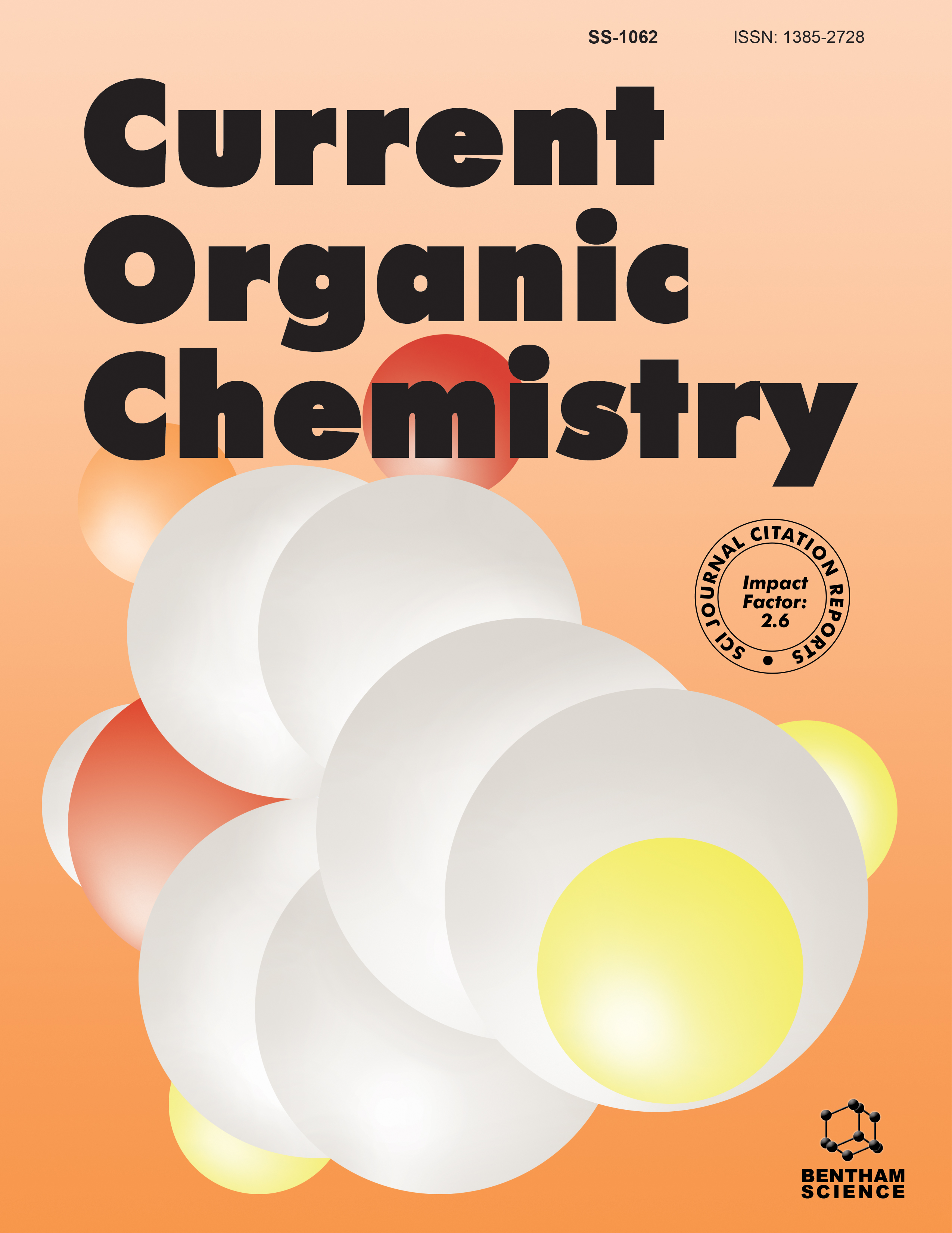- Home
- A-Z Publications
- Current Organic Chemistry
- Previous Issues
- Volume 10, Issue 1, 2006
Current Organic Chemistry - Volume 10, Issue 1, 2006
Volume 10, Issue 1, 2006
-
-
Editorial [Hot Topic: Organophosphorus Chemistry (Guest Editor: Gyorgy Keglevich)]
More LessThe Editor-in-Chief and the management of Current Organic Chemistry decided to devote a special issue to Organophosphorus Chemistry in 2005, to be followed by two more thematic issues in 2006 and 2007. The dedication of one special issue to organophosphorus chemistry, among the annual 18 issues, is a clear recognition of the importance of this subject, the recent trends and achievements of which can be surveyed Read More
-
-
-
The Chemistry of Phosphinines: Syntheses, Coordination Chemistry and Catalysis
More LessAuthors: Nicolas Mezailles and Pascal L. FlochThis review deals with the chemistry of phosphinines. As many reviews are available on the syntheses of these derivatives, only the most versatile methods are presented, or the ones giving access to the phosphinines that have been particularly studied. Then, recent results obtained in the coordination chemistry of phosphinines are summarized with an emphasis on their analogy with CO ligands. Indeed, the first studies pro Read More
-
-
-
N-Acylamidophosphinates: Structure, Properties and Complexation Towards Main Group Metal Cations
More LessAuthors: F. D. Sokolov, V. V. Brusko, N. G. Zabirov and R. A. CherkasovN-Acylamidophosphinates RC(X)NHP(Y)R'2 (NAAP) and their thioanalogues (X,Y= O, S; R = Alk, Ar, CCl3, Het, NR2 2, NR2R3; R' = Ar, OAlk, OAr, SAlk, NAlk2, NHAr) contain X, Y donor atoms and amide nitrogen, which are capable of taking in complexation with metal cations. An application of NAAP complexes in supramolecular chemistry has been investigated in the last decades. Developed synthetic methods allow us to obtai Read More
-
-
-
The Continuing Development of the Chemistry of Phospholes
More LessThe last five years have seen many advances in the chemistry of phospholes. Motivating much of the work has been the potential for discovering valuable applications of phospholes, especially as ligands in metal coordination compounds designed for use as homogeneous catalysts, and in the field of electro-optical substances. This review covers the research in the synthesis, properties and applications of phospholes that has b Read More
-
-
-
2-Phospha- and 2,3-Oxaphosphabicyclo[2.2.2]octenes - Synthesis and Fragmentation to Low-coordinated Species
More LessAuthors: Stefan Jankowski and Krzysztof HubenThe 2-phosphabicyclo[2.2.2]octene and 2,3-oxaphosphabicyclo[2.2.2]octene systems undergo fragmentation in inert solvents on heating, or by UV-irradiation at room or low temperature. The fragmentation is of significance because it leads to the extrusion of low-coordinated species Y-P(X)O (Y = RO, R2N, Aryl; X = O, S, CH2), which are very effective phosphorylating agents. This review covers different aspects of the 2-phospha Read More
-
-
-
6-Membered P-Heterocycles: 1,2-Dihydro-, 1,2,3,6-Tetrahydro- and 1,2,3,4,5,6-Hexahydrophosphinine 1-Oxides
More LessThe members of a logically built P-heterocyclic family are discussed systematically to show a dynamically developing discipline of organophosphorus chemistry. Dichlorocyclopropanation of 2,5-dihydro-1H-phosphole oxides led to 3-phosphabicyclo[3.1.0]hexane 3-oxides that were useful intermediates for the synthesis of ring expanded products, such as 1,2-dihydrophosphinine oxides and 3-alkoxy-1,2,3,6-tetra Read More
-
Volumes & issues
-
Volume 29 (2025)
-
Volume 28 (2024)
-
Volume 27 (2023)
-
Volume 26 (2022)
-
Volume 25 (2021)
-
Volume 24 (2020)
-
Volume 23 (2019)
-
Volume 22 (2018)
-
Volume 21 (2017)
-
Volume 20 (2016)
-
Volume 19 (2015)
-
Volume 18 (2014)
-
Volume 17 (2013)
-
Volume 16 (2012)
-
Volume 15 (2011)
-
Volume 14 (2010)
-
Volume 13 (2009)
-
Volume 12 (2008)
-
Volume 11 (2007)
-
Volume 10 (2006)
-
Volume 9 (2005)
-
Volume 8 (2004)
-
Volume 7 (2003)
-
Volume 6 (2002)
-
Volume 5 (2001)
-
Volume 4 (2000)
Most Read This Month
Article
content/journals/coc
Journal
10
5
false
en


